SUV
4WD and AWD
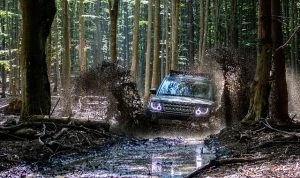
Getting the best grip on the road or terrain is what will get you moving forwards from A to B in the shortest time. Ever since the invention of the first cars, two-wheel-drive has been the mainstay for delivering the engine’s power out to the wheels. At first, two-wheel drive was usually via the rear wheels, as it was much simpler to run a drive shaft from the engine at the front of the car back to the rear wheels to get grip from the rear wheels and to let the front wheels have the job of steering the vehicle.
In saying that, there is also history of 4WD being experimented with back as early as the late 1800s in combination with a traction engine, and, of course, in World War II, the 4WD Willys Jeep was a game-changer.

Once mechanical engineering and quality improved over time, the concept of having the engine over the front axle and the front wheels as the driving wheels as well as for steering the vehicle lowered production costs. A combination of rear-wheel-drive and front-wheel-drive cars were available as a matter of course right up to the 1970s and 1980s. Through the 1990s up until the present day, it was more common to see front-wheel-drive cars for everyday driving.
However, it was the 1980s that proved to be a very innovative period in automotive design and mechanical engineering. The greatest advancement in road-going cars was arguably the use of four-wheel-drive to establish greater levels of grip. As racing and supercars demanded faster cars, the need to control all that power (and actually make better use of it) was essential for winning, especially as there was an ever-increasing number of high-performance cars being pulled out of roadside hedges or being wrapped around power poles.
Enter Audi. Audi’s Quattro technology marked a significant moment in high-performance cars’ and supercars’ history. The Audi Quattro’s technology was essentially the dawn of the modern supercar’s 4WD system, and when Audi entered the World Rally Championship in 1981 with their Audi 80 Quattro car, they were unbeatable. The second-place car was over twenty minutes behind the race-winning Audi!
What is the difference between 4WD and AWD?
This is a good question to answer, because there are numerous new cars of all shapes and sizes available with AWD or 4WD. Generally speaking, four-wheel-drive (4WD) is the older off-road system that has the power split 50:50 front to rear. Add a diff-lock into a 4WD system, and these are off-road kings. Four-wheel-drive can be disengaged so that just two-wheel-drive (2WD) can be used on easier terrain, including for when you’ve finished your off-road adventure and you just want to head back home on the tarmac with 2WD only.
The basic principle of an all-wheel-drive (AWD) system is that it can deliver the optimum level of torque to each wheel individually, thus giving the best possible drive and traction. AWD systems tend to be permanently engaged, but with the power split front to rear, along with individual wheels being variable according to what each wheel is sensing and therefore demanding at the time. AWD systems are more complex in that they use sensors which send precise information and values of each wheels’ speed, torque, wheel slip/spin, brake pressure, and steering input to the AWD’s central control system. The control system then adjusts the torque supplied to each wheel.
Land Rovers and many other new serious off-road vehicles use AWD systems with various diff-locking abilities, which also make them real off-road kings. Four-wheel-drive systems are simpler in nature and are thus simpler and cheaper to fix than more complex AWDs. That said, many manufactures like Subaru know how to make solid, dependable AWD systems for their cars and SUVs that are mainly aimed at everyday on-road use and trips up to the ski fields, but with the credentials for performing well even in some fairly serious off-road terrain.
If you live in a part of the world where gravel roads and rainy seasons collide, then an AWD vehicle with decent ground clearance should be parked up your driveway. If your day includes a trek out to the building site, feeding out to stock, or traversing any serious off-road terrain, then a heavy-duty 4WD or AWD vehicle will be your companion. The good news is there are plenty of these sorts of vehicles about, many of which can be bought new at a good price via Private Fleet.

Campervan Conversions And #VanLife
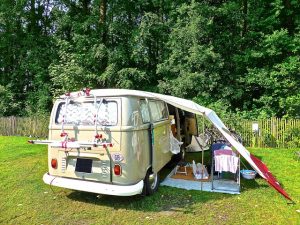
It’s perfectly possible to sleep in the back of most cars in a pinch, as long as the rear seats fold flat and you have a reasonable bit of padding underneath you and a pillow (speaking from experience here). However, I wouldn’t want to do it for more than a night or so in a row without very good reason. If you like to stay in campgrounds or in the middle of nowhere but don’t want to lug around a caravan, then possibly the answer is to build your own campervan, giving you more versatile motoring as well as the ability to take secure accommodation with you – and making it easier to find a park when you stop in to pick up supplies.
If you want to convert a vehicle to a campervan, you need to start with the right one. Vans are always popular and give you more floorspace and headroom in your mobile bedroom, but it’s also possible to convert a sizeable SUV or MPV.
Good vans for converting to a campervan include:
- Mercedes Sprinter (a popular choice for many enthusiasts)
- Ford Transit
- Fiat Ducato
- Toyota Hiace
- Hyundai iLoad
- VW Crafter
- VW Kombi – the classic retro campervan!

Good SUVs and MPVs for conversion are:
- Toyota 4Runner
- Toyota Estima
- Honda CRV
- Honda Odyssey
- Skoda Octavia
In fact, any decent-sized SUV or van or MPV can be converted into a campervan. Even some utes with a covered deck can be used as campervans. Some can even be converted into full legal motorhomes, as long as you meet the standards.
The simplest way to convert your vehicle into a campervan is simply to fold down the back seats, then toss in a mattress, a butane stove and some picnic plates, and you’re good to go. You may also be able to even remove the rear seats completely, although whether you can do and have a legally roadworthy vehicle will depend on which state you’re in.
Assuming that you can remove the rear seats permanently (or at least until your holiday’s over), then you can go one step further and build a bed platform, which will avoid the problem of weird niggly bumps under the mattress that will make you realize where that folk tale of the Princess and the Pea came from. The advantage of a bed platform is that you can store stuff under it (like your clothes and your cooking gear).
If you want more than a place to sleep and a place to stash clothes and food, then you can add all sorts of things. LED fairy lights and rechargeable batteries have made lighting a lot easier than it was when I was in my 20s, so don’t worry about installing fancy lights unless you’re super-keen. The upgrade that a lot of people like to go for is a loo of some sort; in fact, if you’re a New Zealander reading this, you have to have some sort of loo on board to get certification as a freedom camper. I’d add curtains as one upgrade, as cars and vans are usually built for visibility, which means that when you’re trying to sleep or get dressed inside the van, you’re still exposed to the outside world. Even if you are in the middle of nowhere and get changed in the dark, the light of the rising moon can still wake you up in the wee smalls (although an eye mask or a beanie pulled over your eyes can do the trick).
Ultimately, exactly what you want to put into your vehicle to convert it to a campervan will depend on what you want to do with it and how long you’re going to be doing it for. If you are currently without a permanent home and living the van life, like one of my nieces did, then something larger will make your life more comfortable. The big thing to remember, as with any DIY project, is to measure first and play around with squared paper (or a computer-aided design tool if you know how to use one) before you head down to Bunnings and start cutting up the timber.
To be legally classed as a motorhome in Australia, the vehicle has to be fitted with seats and a table, which need to be fixed (although fold-down tables are legit); storage (fixed), somewhere to cook (also fixed) and somewhere to sleep, which also – you guessed it – needs to be fixed. It also needs good ventilation and a fire extinguisher, and you need to stick with the weight restrictions for the class of vehicle. If you want to add anything fancy involving electricity, water or LPG gas, then this needs to be professionally installed and certified for your own safety as well as to meet the requirements. You can read the full requirements here.
You can also take the easy option and simply add a rooftop camper to a ute or 4×4, which takes out a lot of the hassle of cutting, measuring and shocking the neighbours by what you say after hitting your thumb.
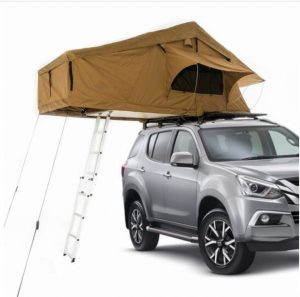
Is a Sedan or SUV Better for a Family Car?
When it comes to choosing the ideal family car, the debate between sedans and SUVs has long been a topic of discussion. Both vehicle types offer their own set of advantages and disadvantages, catering to different needs and preferences. Today we’re comparing the two to determine which is better suited for family use.
Space and Seating
SUVs typically boast larger cabins and higher seating capacities compared to sedans. This means SUVs are often preferred by families needing extra space for passengers and cargo. With the ability to accommodate up to seven or even eight passengers in some models, SUVs offer greater flexibility for larger families or those who frequently carpool.
On the other hand, sedans usually have limited seating capacity, typically accommodating five passengers. While they might be sufficient for smaller families, sedans might feel cramped during long journeys or when carrying bulky items.
Versatility
SUVs are renowned for their versatility, thanks to features like foldable rear seats and ample cargo space. This makes them suitable for various family activities, such as camping trips, sports events, or hauling large items.
Sedans, with their more compact design, might struggle to provide the same level of versatility. However, sedans often have larger trunks compared to similarly sized SUVs, offering ample space for groceries, luggage, or everyday items.
Fuel Efficiency
In general, sedans tend to be more fuel-efficient than SUVs due to their lighter weight and aerodynamic design. Families concerned about fuel costs or environmental impact might lean towards sedans for their superior fuel economy. However, advancements in hybrid and electric SUV technology have narrowed this gap in recent years, offering eco-conscious families alternative options without sacrificing space and utility.
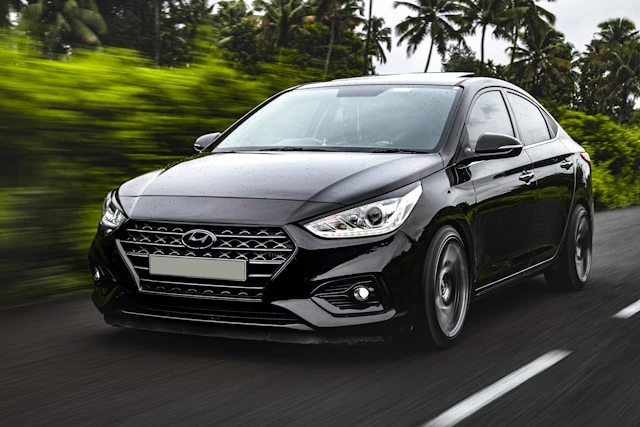
Driving Experience
Sedans are typically praised for their smooth handling, precise steering, and lower centre of gravity, resulting in a more car-like driving experience. This can be advantageous for families who prioritise comfort and agility, especially in urban environments or tight parking spaces.
On the other hand, SUVs often provide a commanding view of the road, along with enhanced ground clearance and all-wheel-drive capabilities, making them better suited for rough terrain or adverse weather conditions.
Safety
Both sedans and SUVs come equipped with a range of safety features designed to protect occupants in the event of a collision. However, SUVs generally have a higher stance, providing better visibility and potentially reducing the risk of certain types of accidents, such as rear-end collisions.
Additionally, SUVs often incorporate advanced safety technologies, such as blind-spot monitoring and lane-keeping assistance, which can further enhance driver awareness and accident prevention.
Cost
In terms of upfront costs, sedans tend to be more affordable than SUVs, making them an attractive option for budget-conscious families. Additionally, sedans typically have lower maintenance and insurance costs compared to SUVs, which can contribute to long-term savings. However, families should also factor in fuel expenses, as SUVs typically consume more fuel than sedans, potentially offsetting the initial cost savings over time.
In the end, the decision between a sedan and an SUV as a family car ultimately comes down to individual priorities and preferences. Families requiring ample space, versatility, and off-road capabilities may find SUVs better suited to their needs, while those prioritising fuel efficiency, driving dynamics, and affordability may opt for sedans.
Should I Buy a Ute or SUV?
Choosing between a ute and an SUV depends on your specific needs, lifestyle, and preferences. Both types of vehicles have their advantages and disadvantages, so it’s essential to consider your priorities and how you plan to use the vehicle.
Here are some key factors to consider when deciding between a ute and an SUV.
Cargo and Towing Capacity:
Ute: generally designed for heavy-duty use, utes are a better choice if you need to transport large or heavy items regularly. They also tend to have higher towing capacities, making them suitable for hauling trailers, boats, or other equipment.
SUV: They typically have a closed cargo area, which is more secure and weather-resistant than a ute’s open bed. While some SUVs offer good cargo space, their towing capacities may be lower than utes, so consider your towing needs.
Passenger Capacity:
Ute: Usually have two rows of seats and can accommodate up to five passengers, but the rear seats may be less spacious and comfortable compared to SUVs.
SUV: Available in various sizes, from compact to full-size, and can often seat more passengers, including up to eight occupants. If you need to transport a larger family or group of people regularly, an SUV may be a better choice.
Off-Road Capability:
Ute: Many utes come with four-wheel drive (4WD) or all-wheel drive (AWD) options, making them suitable for off-road adventures or rugged terrain.
SUV: SUVs come with varying levels of off-road capability. Some are designed for mild off-roading, while others, like dedicated off-road SUVs, are built for more extreme conditions.
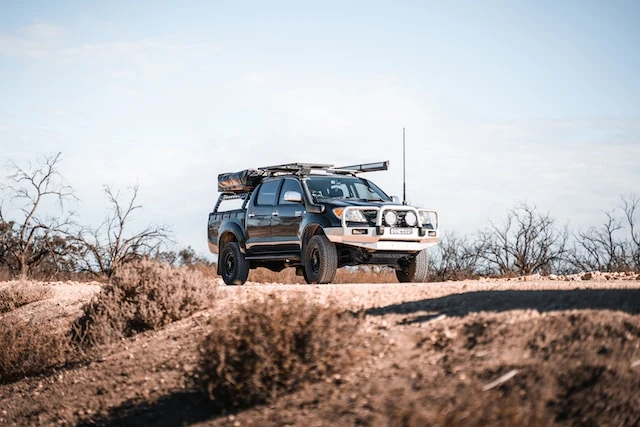
Fuel Efficiency:
Ute: utes may have larger, more powerful engines designed for heavy work, which can result in lower fuel efficiency compared to some SUVs.
SUV: Many SUVs offer better fuel efficiency, especially the smaller and more compact models. If fuel economy is a priority, an SUV might be a better choice.
City versus Rural Driving:
Ute: utes can be more challenging to maneuver in tight urban spaces due to their longer wheelbase. They are often preferred in rural or suburban settings where space is less of a concern.
SUV: Smaller SUVs are generally easier to drive in city environments because of their compact size and better visibility, but obviously this will be different for larger SUV models.
Safety:
Both utes and SUVs come equipped with a range of safety features, but the availability and level of these features can vary between models and brands. Be sure to research and compare safety options when making your decision.
Price:
Consider your budget, as utes and SUVs come in a wide price range. Utes tend to have a lower starting price for basic models, but high-end models can be expensive. SUVs also vary in price, with luxury SUVs typically being more costly.
Ultimately, choosing between a ute and an SUV should be based on your specific needs and preferences. It’s advisable to test drive both types of vehicles and consider factors like cargo space, passenger capacity, towing needs, and how you plan to use the vehicle before making a final decision.
Additionally, research the available models and their features to find the one that best suits your lifestyle and requirements.